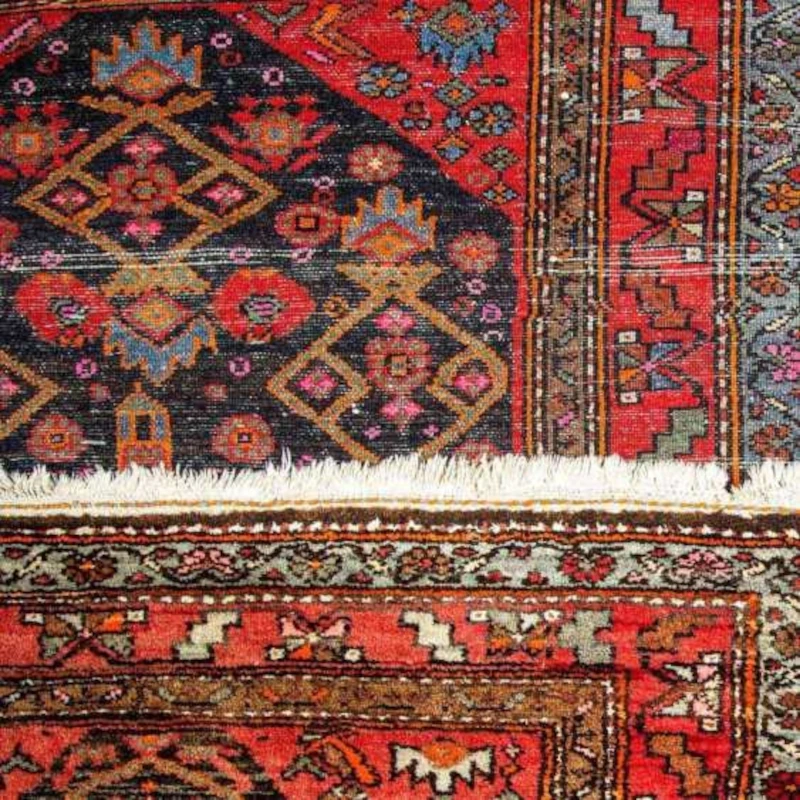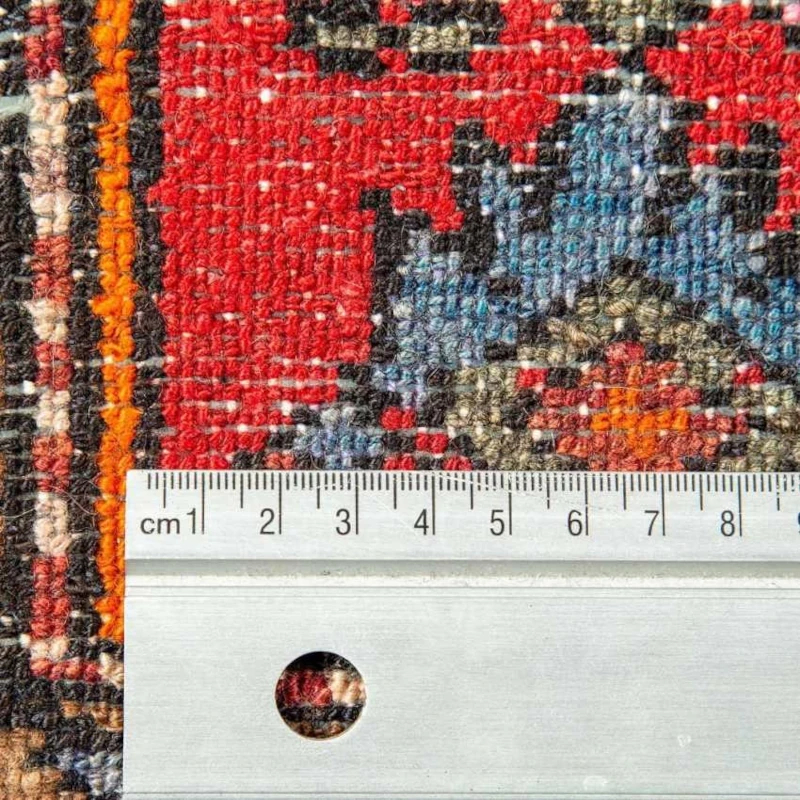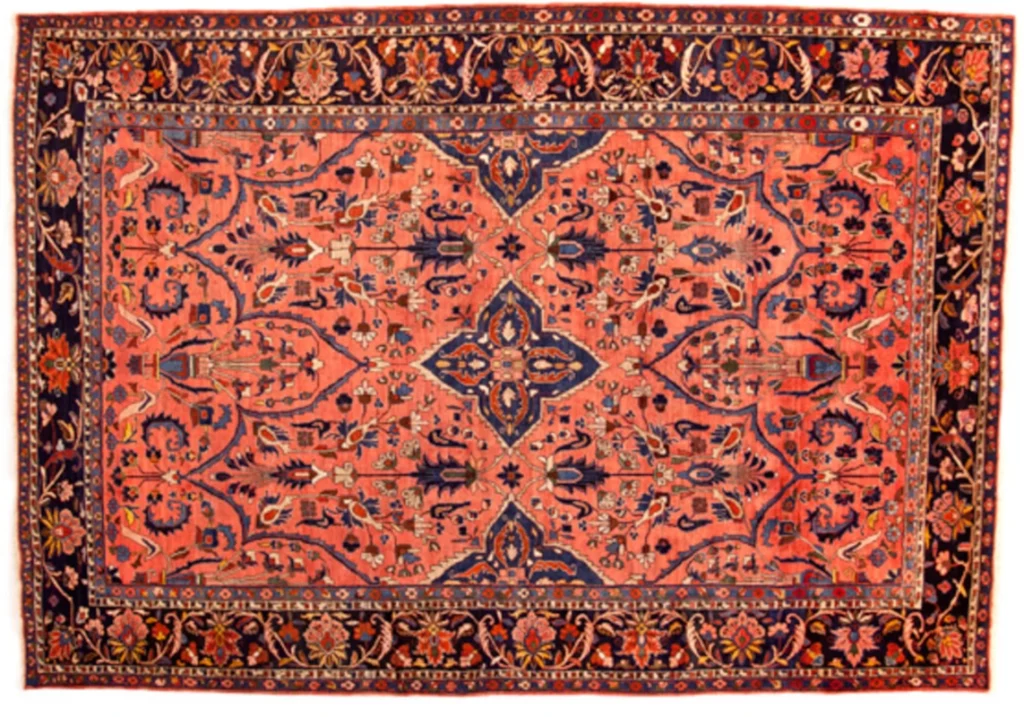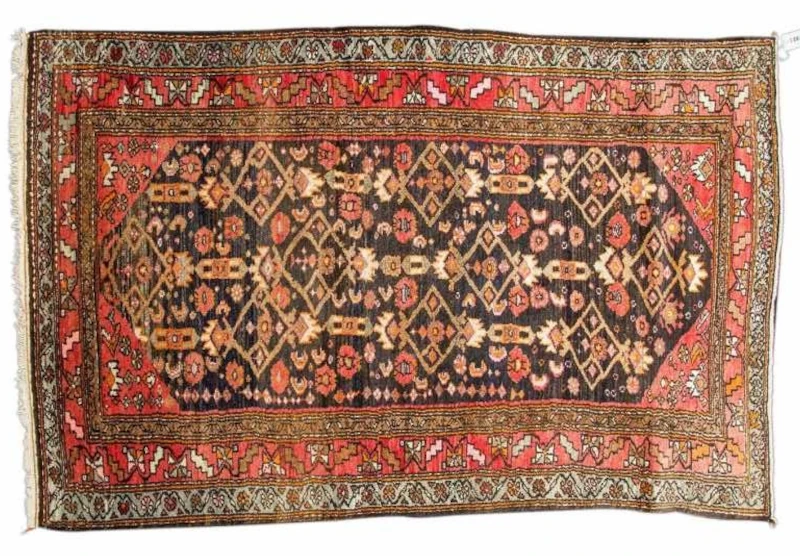Kamareh Rugs
Garin mountain range is a vast boundary wall
west of the Zagros valley home to ancient
Medians who had made the first western
Iranian power. Garin’s summit called Valash
Peak, which is a throne name (Vologases) for
the Parthians, another ancient Iranian leading
power who had built one of their western
capitals in this region.
There are a group of villages between Valash
and the main massive of Garin range, famous
as Kamareh, which namely means in Persian
“mount’s waist” or “mount’s middle”. In central Zagros there are thousands of
villages as well as semi-settled tribes and rug
weaving is a fundamental craft for these
folks. Kamareh’s inhabitants are Lurs and
Armenians, the latter had been settled there at
the Safavid Era under the command of Shah
Abbas the Great. The area belong to Lorestan province, but in
the case of woven things, Kamareh should be
categorized under Hamadans, following
Hamadan’s structure and designs and also
under Araks and their American Saruq style.
In other words, Kamareh rugs have been
made out of heterogeneous styles.
Technical aspects and the structure of Kamareh Rugs


With some exceptions, Kamareh villages
mostly follow the Hamadan structure:
woolen piled, single-wefted, and woven with
the symmetrical/Turkish knot on cotton
foundation. The two famous exceptions are
Lilian and Reihan villages in which double-
wefted pieces are produced in the style of
American Saruqs as well as single-wefted
pieces with asymmetrical/Persian knotting!
Rug sizes predominate in Kamareh. The most
favored sizes are dozar (120×180).
Dyeing and painting of Kamareh Rugs

Central Zagros provides the most incorrupt
natural palette amongst Persian rugs.
Madder’s root of the area bring various
shades of red, an acid moderated rosy of
which predominate in Kamareh rugs.
Serving as the ground color, this specific kind
of rosy has no other example in Hamadan’s
single-wefted pieces. This forget-me-not
shade has come from American Saruq pieces,
which are imitated in some neighboring
villages.
Dark blue has also a leading role in Kamareh
making the rosy shades more vivid.
Designs and patterns of the Kamareh Rugs

Central medallion is the Kamareh’s basic
design. Kamareh grounds are filled chiefly
with Herati or Mahi (Fish) patterns. Kamareh
medallions share a recognizable feature.
They are large medallions (mostly eight
pointed) which could be framed in a
horizontal rectangle. Again Lilian is an
exception, enjoying its own type of
medallions.
Footprint of the 19th’s American Saruq
designs remained not only on Kamareh but
on the whole region. Leafy sprays projecting
out of the medallions could be an example of
this lasting influence.


